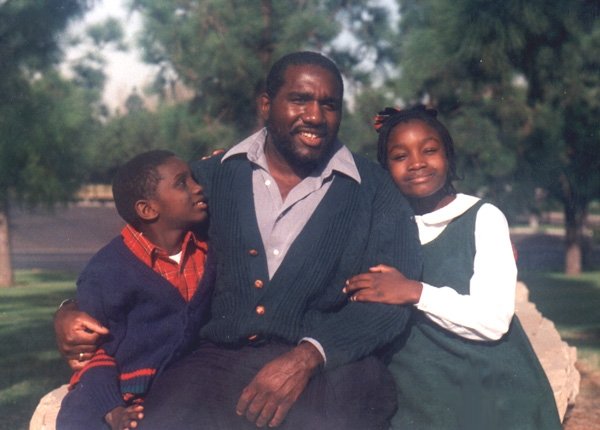
Programmer Analyst
Email: dvtaylor@uci.edu
Derek Taylor
After completing an undergraduate degree in biochemistry and biophysics at UC Davis, I began my first professional job studying self-injury with UCI and the State Developmental Research Institute at Fairview Developmental Center under the guidance of Curt A Sandman, Ph.D.. One of our first publications during that endeavor was an online data acquisition program, a progenitor of computer-aided collection of behavioral data. This is my third incarnation with UCI. Approaching my second, I interviewed for two jobs, one as a chemist and one as a programmer. I decided I was a programmer when I discovered it paid $13K more per year. However, the resultant 9-year stint at a UCI Neuroimaging Center allowed me to maintain my interest in psychiatric research and the brain while learning imaging analysis techniques. I have also done research with the VA Cooperative Studies Program studying alcoholic cirrhosis, Orange County Partnership examining the continuum of care for the homeless in Orange County, and with Amen Clinics Inc studying depression and brain trauma.

While I have not yet attained my lifetime goal of getting my picture on the cover of Rolling Stone, I have had my analysis statistical parametric map cortical surface overlay, published on the cover of the Journal of Neurotrauma, so I got that going for me.
1. Taylor DV, Hetrick WP, Neri CL, Touchette P, Barron JL, Sandman CA. Effect of naltrexone upon self-injurious behavior, learning and activity: a case study. Pharmacol Biochem Behav. 1991;40(1):79-82.
2. Hetrick WP, Krutzik MN, Taylor DV, Sandman CA, Rusu L, Martinazzi VP. Naltrexone has no hepatotoxic effects in a self-injurious patient with chronic hepatitis. J Clin Psychopharmacol. 1993;13(6):453-4.
3. Taylor DV, Rush D, Hetrick WP, Sandman CA. Self-injurious behavior within the menstrual cycle of women with mental retardation. Am J Ment Retard. 1993;97(6):659-64.
4. Sandman CA, Hetrick W, Taylor DV, Chicz-DeMet A. Dissociation of POMC peptides after self-injury predicts responses to centrally acting opiate blockers. Am J Ment Retard. 1997;102(2):182-99.
5. Sandman CA, Hetrick W, Taylor DV, Marion SD, Touchette P, Barron JL, et al. Long-term effects of naltrexone on self-injurious behavior. Am J Ment Retard. 2000;105(2):103-17.
6. Fallon JH, Keator DB, Mbogori J, Taylor D, Potkin SG. Gender: a major determinant of brain response to nicotine. Int J Neuropsychopharmacol. 2005;8(1):17-26.
7. Morgan TR, Weiss DG, Nemchausky B, Schiff ER, Anand B, Simon F, et al. Colchicine treatment of alcoholic cirrhosis: a randomized, placebo-controlled clinical trial of patient survival. Gastroenterology. 2005;128(4):882-90.
8. Keator DB, Gadde S, Grethe JS, Taylor DV, Potkin SG, First B. A general XML schema and SPM toolbox for storage of neuro-imaging results and anatomical labels. Neuroinformatics. 2006;4(2):199-212.
9. Amen DG, Wu JC, Taylor D, Willeumier K. Reversing brain damage in former NFL players: implications for traumatic brain injury and substance abuse rehabilitation. J Psychoactive Drugs. 2011;43(1):1-5.
10. Willeumier K, Taylor DV, Amen DG. Decreased cerebral blood flow in the limbic and prefrontal cortex using SPECT imaging in a cohort of completed suicides. Transl Psychiatry. 2011;1:e28.
11. Willeumier KC, Taylor DV, Amen DG. Elevated BMI is associated with decreased blood flow in the prefrontal cortex using SPECT imaging in healthy adults. Obesity (Silver Spring). 2011;19(5):1095-7.
12. Amen DG, Highum D, Licata R, Annibali JA, Somner L, Pigott HE, et al. Specific ways brain SPECT imaging enhances clinical psychiatric practice. J Psychoactive Drugs. 2012;44(2):96-106.
13. Willeumier K, Taylor DV, Amen DG. Elevated body mass in National Football League players linked to cognitive impairment and decreased prefrontal cortex and temporal pole activity. Transl Psychiatry. 2012;2:e68.
14. Harch PG, Andrews SR, Fogarty EF, Amen D, Pezzullo JC, Lucarini J, et al. A phase I study of low-pressure hyperbaric oxygen therapy for blast-induced post-concussion syndrome and post-traumatic stress disorder. J Neurotrauma. 2012;29(1):168-85.
15. Amen DG, Jourdain M, Taylor DV, Pigott HE, Willeumier K. Multi-site six month outcome study of complex psychiatric patients evaluated with addition of brain SPECT imaging. Adv Mind Body Med. 2013;27(2):6-16.
16. Amen DG, Taylor DV, Ojala K, Kaur J, Willeumier K. Effects of brain-directed nutrients on cerebral blood flow and neuropsychological testing: a randomized, double-blind, placebo-controlled, crossover trial. Adv Mind Body Med. 2013;27(2):24-33.
17. Amen DG, Raji CA, Willeumier K, Taylor D, Tarzwell R, Newberg A, et al. Functional Neuroimaging Distinguishes Posttraumatic Stress Disorder from Traumatic Brain Injury in Focused and Large Community Datasets. PLoS One. 2015;10(7):e0129659.
18. Raji CA, Willeumier K, Taylor D, Tarzwell R, Newberg A, Henderson TA, et al. Functional neuroimaging with default mode network regions distinguishes PTSD from TBI in a military veteran population. Brain Imaging Behav. 2015;9(3):527-34.
19. Amen DG, Trujillo M, Keator D, Taylor DV, Willeumier K, Meysami S, Raji CA. Gender-Based Cerebral Perfusion Differences in 46,034 Functional Neuroimaging Scans. J Alzheimer’s Dis. 2017;60(2):605-614.
20. DG Amen, DV Taylor, S Meysami, CA Raji. Deficits in regional cerebral blood flow on brain SPECT predict treatment resistant depression. Journal of Alzheimer’s Disease 2018; 63 (2), 529-538
21. T van Erp, R Jirsaraie, M Faulkner, K Scambray, J Fong, D Taylor, U Rao. Dentate gyrus volume is associated with childhood maltreatment and depression severity in adolescents. (2018) NEUROPSYCHOPHARMACOLOGY 43, S131-S131
Other Publications
1. Taylor DV. Patchwork. Marriage. May 1997 1997; 27(3):1.
2. Taylor DV. The Asha Chronicles. Irvine CA: Derek V. Taylor; 2007.
3. Lee D, Brookes C, Taylor D. Homeless and At-Risk Indicators Report. OC Partnership. 2009-2010
4. Taylor, DV. Days of Elijah. Irvine CA: Dereik V. Taylor; 2018.
What the lab means to me…
“In this lab I have an opportunity to pursue a research interest in studying depression, prompted by the realization that I had something in the way of resilience that a close friend of mine who committed suicide did not. If I discover what it is, I would certainly give it away to anyone who needs it, if I can. In my interview with Dr. Yassa we shared a magic moment of harmonic convergence around the topic of how mechanisms of memory and self-identity suborn emotional resilience.”












